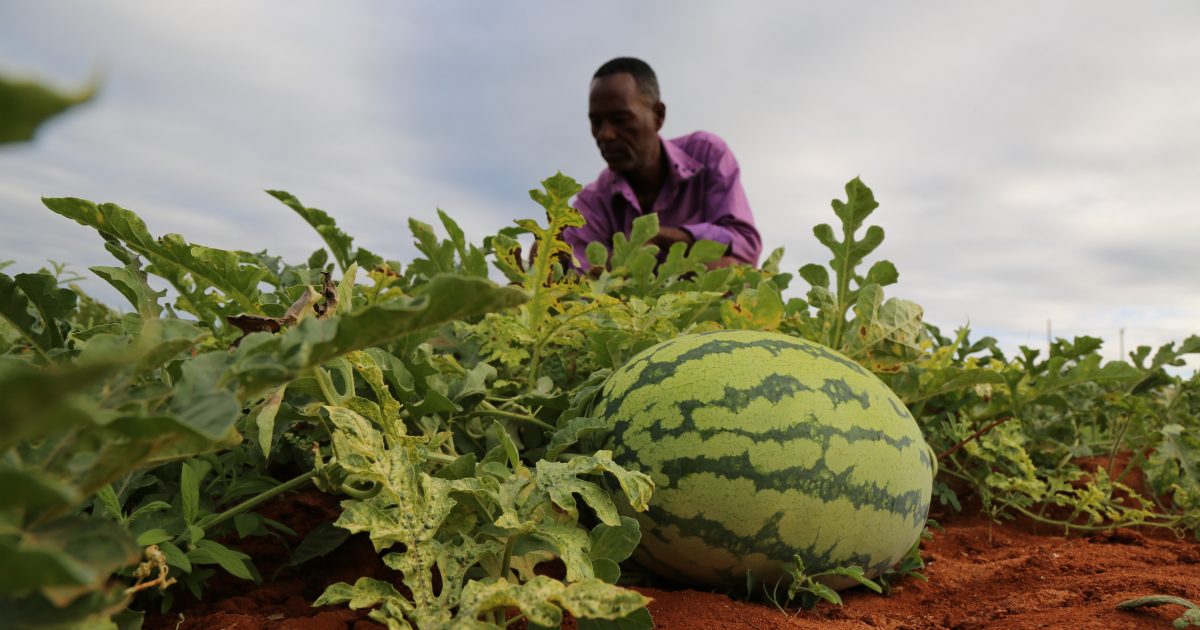Many farmers in Kitui practice small scale farming to make a living, but the productivity has remained very low subjecting them to abject poverty despite putting long hours and effort in their farms.
Kitui County Government has embarked on encouraging and supporting a shift to drought-resistant and high-value crops such as pulses.
The County has invested heavily in supporting small scale agricultural programs at Mianda Irrigation Scheme in Kitui South.
The farmers have been supported through the provision of seeds, fertilizer, pesticides, and tractors ploughing farms, solar generators and county agricultural extension officers supporting the farmers.
Famers receive among other inputs, seeds and pesticides to grow high-value crops like vegetables that mature faster for both domestic and commercial purposes.
A tour of the rural areas of Kitui is evidenced by a rising number of farmers who have joined the programme launched in 2017.
The farmers tell a story of improved livelihoods, increased gains and expanded land under farming as the key upshots of the Mianda irrigation programme.
Suleiman Kalundu from drought-stricken Voo village in Kitui East has found greener pastures in watermelon farming, which earns him over a million shillings annually.
Speaking at his farm, Kalundu says he has made a fortune since he ventured into the agribusiness five years ago thanks to the growing demand and ready market for watermelons.
Before then he had ventured into small-scale maize and tomato farming on his seven-acre piece of land which proved nonviable due to erratic rainfall patterns commonest in the remote part of Kitui County.
“With mere Sh.70, 000 which I spend on farm preparation, water pump fuel and buying seeds and pesticides, I’m able to recoup Sh.600, 000 in each of the two seasons per year,” revealed Kalundu.
He said he sells a kilo of watermelon at between Sh30 and Sh40 in his farm, but stresses the prices are at peak during dry seasons.
“From the income I generate from watermelon production I’m able to support my family as well as educate my children. I have also bought several pieces of land to expand my venture,” he added.
He, however, said despite being lucrative, watermelon farming was not without its challenges.
“This area is generally water-scarce. I rely on pumped irrigation water from scoop-wells on Thua riverbed which is adjacent to my farm. However, water from Mianda Irrigation Scheme has spun my fortunes for the better,” he narrated.
Kalundu further said the crop was prone to diseases forcing him to spend heavily on pesticides. Harvesting usually begins 75-100 days after planting depending on cultivation.
He disclosed that watermelons are harvested as close to full-ripeness as possible; this is when the fruit surface touching the soil is light yellow or when the vine closest to the fruit is starting to wilt.
“The peduncle is cut-off to prevent it from ripping into the skin of the fruit, which can result in secondary diseases. Watermelons are very prone to cracking or bursting during and after harvest due to rough handling,” he noted.
The farmer said watermelons should not be thrown during handling, stepped on or stacked too high.
“Yield range from 20-30 tonnes per acre depending on variety and crop management practices,’’ added Kalundu.
The Makueni County Government in the past acquired 40 tractors and deployed them across the County as part of efforts to mechanize farming.
The County has further seen strengthened and well-equipped support system through agricultural extension officers who have been given 26 new motorcycles for easy movement.
By Yobesh Onwong’a





